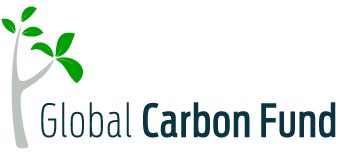Vistra Fire and Teslas Burning in California: Is it a Wake-Up Call for Battery Storage Safety?
The devastating wildfires in Los Angeles at the start of 2025 reminded the world of nature’s destructive power. And now, the recent fire at the world’s largest battery storage facility, Vistra Energy in Moss Landing, Northern California has rattled the local communities.
From personal loss to potential health risks, this incident has raised serious concerns about the safety of lithium-ion battery technology. It also reveals the previously overlooked vulnerabilities and urges for a stronger safety measure within the battery storage industry.
Vistra Fire: A Blaze that Shook Residents and the Battery Storage Industry
TV channels and media reports were buzzing with the news of the Vistra Energy facility fire that erupted on Thursday. It sent flames and thick smoke into the sky. By Friday, the fire had subsided but caused a massive disruption. The incident forced the evacuation of 1,200 to 1,500 residents because of the fire and the risks associated with lithium batteries.
Brad Watson, Vistra’s senior director of community affairs, said,
“The Environmental Protection Agency is testing air quality at the facility and that the company has hired an air consultant to check for pollution in nearby communities. Vistra will share the results when they are available.”
Toxic smoke, containing harmful gases like hydrogen fluoride engulfed the atmosphere. According to the Centers for Disease Control and Prevention (CDC), this chemical can irritate the respiratory system and, in high concentrations can be fatal.
Firefighters, led by Fire Chief Joel Mendoza of the North County Fire Protection District, opted to let the fire “burn out”—a common practice for lithium-ion battery fires due to the intense heat and difficulty in extinguishing them.
While none were injured, residents faced significant challenges, including air quality concerns and uncertainty about the long-term environmental impact of battery fire.
Tesla Batteries Blaze Complicate Cleanup Efforts
California’s status as a leader in EVs became an unintended complication during the Moss Landing fire. Bloomberg reported that many cars in the evacuation area were Tesla EVs, which use lithium-ion batteries.
These batteries added toxic materials to the debris and required specialized removal techniques. Furthermore, cleanup crews faced several hurdles, as lithium battery fires need huge amounts of water to extinguish.
Tesla and other automakers have published emergency response guides to help first responders manage such incidents. Despite these efforts, the scale and complexity of the Moss Landing fire demonstrated that the industry still has a long way to go in ensuring safety and preparedness.
Lithium-Ion Batteries: How Risky are They?
Lithium-ion batteries are known for their efficiency and energy density. However, their chemical composition also poses significant risks. They contain volatile electrolytes which when exposed to high temperatures or physical damage can release flammable gases.
Overcharging or overheating can lead to thermal runaway, a chain reaction of uncontrolled heating that can cause fires or explosions. When exposed to high temperatures or physical damage, the volatile electrolytes in these batteries release flammable gases.
The environmental challenges are equally concerning. Burnt-out lithium-ion batteries complicate waste management efforts, as they require specialized handling to prevent further contamination.
Even after a fire is extinguished, the risk of reignition persists. Signs of potential failure, such as bulging, cracking, or venting gases, require immediate attention to prevent catastrophic outcomes.

Source: USFA
Exploring Safer Alternatives to Lithium-Ion Batteries
The Moss Landing fire has sparked urgent calls for innovation in battery technology and safety protocols. AP News reported that scientists are exploring options like water-based and redox flow batteries. These technologies promise greater safety but are still not a viable option for commercial scale. Lithium iron phosphate batteries, known for their stability, are another contender. However, they still carry some fire risks, but lesser than traditional lithium-ion systems.
Yiguang Ju, a professor of engineering at Princeton University, highlighted the risks associated with large-scale lithium battery systems. Regardless of the specific type of lithium battery, he noted, their size substantially increases the danger of excessive heating and fire.
Thus, there is a serious need for innovation in battery technology to support the safe transition to clean energy.
-
The U.S. Fire Administration has highlighted the response strategies for lithium-ion battery fires to handle any unforeseen fire accident more swiftly.
Some noteworthy points are:
- Having highly efficient fire suppression systems designed specifically for battery storage facilities.
- Partnering with EV manufacturers and industry experts to develop better firefighting methods, especially for battery storage facilities
- Establishing safety zones to protect nearby areas from hazards and use advanced cooling techniques to control heat generated by lithium-ion batteries.
- Training firefighters regularly to ensure they can handle these incidents safely. Learn and apply emergency shutdown procedures for EVs to quickly isolate power sources and reduce risks.
For locals, the fire brought anxiety, evacuations, and concerns about air quality and health. This incident shows the human cost of clean energy projects and the need to prioritize community safety.
California leads in clean energy efforts and Governor Gavin Newsom wants all vehicles to be zero-emission by 2035. However, the Moss Landing fire exposes the challenges of relying on technologies like lithium-ion batteries more precisely their safety.
California moves to accelerate to 100% new zero-emission vehicle sales by 2035
 Source: CARB
Source: CARB
All in all, the Vistra Energy fire and the Tesla EVs burning is a wake-up call for the battery storage industry. Proactive steps, such as investing in innovation, strengthening regulations, and building community trust, can make this energy transition safer.
The post Vistra Fire and Teslas Burning in California: Is it a Wake-Up Call for Battery Storage Safety? appeared first on Carbon Credits.



























